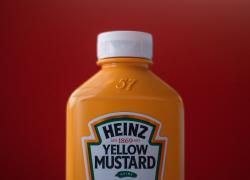
The first clinical-stage dual-payload conjugate
Chengdu Kanghong's KH815 enters human testing this month.
Chengdu Kanghong's KH815 enters human testing this month.

With growing recent industry interest in antibody-drug conjugates that carry dual payloads, the entry of the first such project into human trials will be momentous. The asset in question, Chengdu Kanghong's KH815, is to start a phase 1 solid tumour study on 30 April, according to its recently unveiled listing in clinicaltrials.gov.
The latest first-in-human trial initiations also include Nimbus's entry into Werner helicase inhibition, and a new autologous Car-T cell therapy for multiple myeloma from Legend Biotech. That said, most of the spotlight will fall on KH815, with competitors no doubt paying close attention to how this ADC's characteristics play out in the clinic.
These competitors include numerous companies set to present preclinical data on dual-payload ADCs at the upcoming AACR conference. KH815, a TROP2-targeting molecule with topoisomerase 1 inhibitor and RNA polymerase 2 inhibitor payloads, features among these, as does another Chengdu Kanghong dual-payload ADC, KHN922, which targets HER3.
A close eye will have to be kept on the toxicities arising from combining multiple payloads, something calling for a careful approach in the design of such molecules. This, along with a dual-payload ADC's ability to avert some relapses arising from the build-up of resistance to a single payload, will be among things to look for in KH815's phase 1 study.
New Car-Ts
Meanwhile, Legend is building on the success of its J&J-partnered anti-BCMA Car-T therapy Carvykti with additional multiple myeloma projects.
A dual-targeting anti-CD19/GPRC5D project, LCAR-M61S/LCAR-M61D, is in phase 1 trials, and this is being joined by a GPRC5D-targeting monospecific Car coded LCAR-M61SQ, according to a new clinicaltrials.gov entry. Legend says both of these are autologous therapies, but both studies are sponsored not by the company but by Chinese academic centres.
Legend's phase 1 pipeline at one point included the anti-GPC3 Car LB2101, but this trial was terminated last August. Still in play with this mechanism is China's OriCell, whose OriC902 has just been taken into phase 1; according to OriCell's R&D pipeline OriC902 is distinct from another anti-GPC3 Car-T therapy, Ori-C101, but it's not immediately clear how these two differ.
Ori-C101 and OriC902 are now both in phase 1 in GPC3-positive liver cancer, but the latter's trial is investigator-initiated.
Recently disclosed first-in-human studies*
| Project | Mechanism | Company | Trial | Scheduled start |
|---|---|---|---|---|
| OriC902 | GPC3 Car-T | OriCell | IST in GPC3+ve liver cancer | 24 Feb 2025 |
| LCAR-M61SQ | GPRC5D Car-T | Legend | IST in r/r (excludes prior GPRC5D therapy) multiple myeloma | 20 Mar 2025 |
| GFS202A | GDF-15 x IL-6 MAb | GenFleet | Solid tumour patients with cachexia/pre-cachexia | 14 Apr 2025 |
| JS212 | EGFR x HER3 ADC | Junshi Biosciences | Solid tumours | 30 Apr 2025 |
| KH815 | TROP2 dual-payload ADC | Chengdu Kanghong | Solid tumours | 30 Apr 2025 |
| NDI-219216/ NTX-452 | WRN inhibitor | Nimbus | MSS/pMMR solid tumours | May 2025 |
Note: *projects newly listed on the clinicaltrials.gov database between 21 and 27 Mar 2025.
The private biotech Nimbus Therapeutics continues to experiment with the early development of projects across various therapy areas before licensing these out to bigger partners. This has met with some success, and cash has followed, as seen by the company's $210m venture capital raise in September 2023, for instance.
Nimbus's latest clinical foray is into the synthetic lethality mechanism of Werner helicase inhibition, with the non-covalent molecule NDI-219216, which had a preclinical poster at last year's Triple meeting. Among Werner helicase inhibitor competitors GSK has rights to Ideaya's IDE275/GSK4418959, while Roche is to present first-in-human data at AACR with RO7589831, which it licensed from Vividion (now owned by Bayer) for $135m up front.
Finally, there has been a slight uptick of interest in ADCs against EGFR, courtesy of ALX's ALX2004 and CSPC Pharmaceutical's SYS6010, and Lepu's somewhat premature disclosure of an ASCO late-breaker for MRG003. Junshi's JS212 is an ADC that combines this activity with blockade of HER3, and will enter phase 1 at the end of April.
2015













